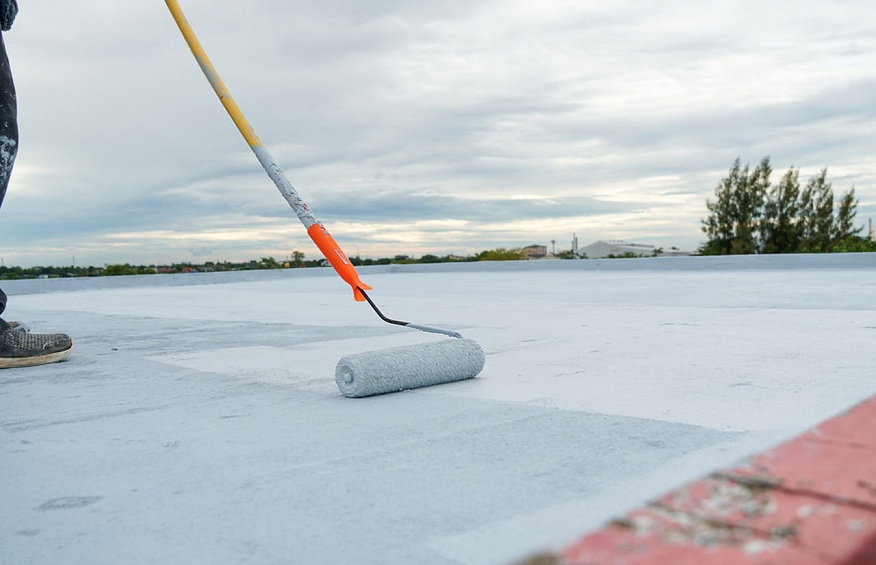Key Take a ways:
- UV protection is essential to safeguard your investments from fading, discoloration, and structural damage caused by UV rays.
- Polyurethane UV protective coatings effectively prevent fading and discoloration by blocking harmful UV rays.
- These coatings work by absorbing UV energy and converting it into heat, preventing damage to the underlying material.
- Polyurethane coatings offer durability, adhesion to various surfaces, and a variety of finishes, making them versatile and long-lasting.
- When choosing a UV protective coating, consider factors such as substrate, required UV resistance level, and environmental conditions.
- Comparing different brands and formulations can help you find the most suitable polyurethane UV protective coating.
- For successful application, prepare the surface, follow manufacturer’s instructions, and allow for proper curing.
- Polyurethane UV protective coatings not only provide essential protection but can also enhance the aesthetics of surfaces.
- Glossy and satin finishes can elevate the appearance of wood and other surfaces, while tinted and textured coatings offer unique visual effects.
- Integrating UV protection into your design can balance both the desired level of protection and the visual appeal of your surfaces.
The Importance of UV Protection: Safeguarding Your Investment
When it comes to protecting your investments, whether it’s a piece of furniture, a wooden deck, or even a work of art, UV protection is essential. We often underestimate the damaging effects of UV rays on our valuables. Over time, prolonged exposure to sunlight can cause fading, discoloration, and even structural damage to various materials.
1. Understanding the Damaging Effects of UV Rays
UV rays, specifically UV-A and UV-B rays, emitted by the sun can wreak havoc on surfaces, leading to irreversible damage. These rays have the power to break down the chemical bonds in materials, resulting in color fading, loss of luster, and weakening of the material’s structure.
When exposed to UV radiation, wood surfaces can become dry, cracked, and warped. Fabrics and upholstery can lose their vibrant colors and become brittle. Even metals can oxidize and corrode when subjected to prolonged sun exposure.
2. Why UV Protection is Essential for Long-lasting Beauty
Applying a high-quality UV protective coating to your valuables is crucial to maintain their beauty and extend their lifespan. The protective layer acts as a shield, blocking harmful UV rays from penetrating the surface and causing damage.
Without proper UV protection, your investments will fade, lose their original color, and deteriorate at a faster rate. Whether it’s a wooden structure, a painting, or outdoor furniture, protecting them from UV radiation is an investment in their longevity and aesthetics.
3. Protecting Your Valuables from Fading and Discoloration
Polyurethane UV protective coatings offer an effective solution for preventing fading and discoloration caused by UV radiation. These coatings are specifically formulated to block harmful rays, keeping the material underneath safe.
By applying a polyurethane UV protective coat, you can safeguard your valuables from the adverse effects of the sun, allowing them to retain their original beauty for years to come. Whether it’s preventing the fading of outdoor furniture or ensuring the longevity of a treasured wooden artwork, UV protection is an investment worth making.
The Science Behind Polyurethane UV Protective Coatings
Understanding the science behind polyurethane UV protective coatings can help you appreciate their effectiveness in combating UV damage. These coatings work based on specific mechanisms and formulations designed to provide maximum protection to surfaces.
1. How Polyurethane Coatings Work to Combat UV Damage
Polyurethane coatings are composed of a combination of polyols and isocyanates, which react to form a durable protective layer. When exposed to UV radiation, the coating undergoes a photochemical reaction, absorbing the UV energy and converting it into heat.
As a result of this energy conversion process, the polyurethane coating prevents the UV rays from penetrating the material underneath, thus preventing damage such as color fading and structural breakdown.
2. Exploring the Technology Behind UV-Resistant Formulations
UV-resistant formulations used in polyurethane coatings are specifically designed to provide enhanced protection against UV radiation. These formulations may include additives such as UV absorbers, hindered amine light stabilizers (HALS), antioxidants, and pigments.
UV absorbers work by absorbing the UV radiation and converting it into harmless heat, reducing the amount of energy that reaches the surface. HALS, on the other hand, act as radical scavengers, preventing the degradation of the polyurethane coating caused by UV exposure.
By harnessing the power of these additives, polyurethane UV protective coatings can effectively shield surfaces from UV damage, ensuring their longevity and beauty.
3. The Advantages of Polyurethane over Other UV Protective Coatings
Polyurethane UV protective coatings offer several advantages over other types of coatings when it comes to UV protection.
Firstly, polyurethane coatings form a robust and flexible protective layer, capable of withstanding environmental factors such as temperature fluctuations and moisture. This durability ensures long-lasting UV protection, even in harsh conditions.
Secondly, polyurethane coatings provide excellent adhesion to various substrates, including wood, metal, concrete, and plastics. This versatility makes them suitable for a wide range of applications, from outdoor furniture to automotive finishes.
Lastly, polyurethane coatings offer a wide range of options for different finishes, including glossy, satin, and matte. This allows you to choose a finish that enhances the aesthetics of your surfaces while providing the necessary UV protection.
Choosing the Right Polyurethane UV Protective Coating
Choosing the right polyurethane UV protective coating for your project involves considering various factors to ensure optimal results and performance.
1. Factors to Consider When Selecting a UV Protective Coating for Your Project
First and foremost, consider the substrate you will be coating. Different surfaces may require different formulations or preparation methods to ensure proper adhesion and protection.
Next, consider the level of UV protection required. Some projects may require high levels of UV resistance, while others may need more moderate protection. Determine the specific UV requirements of your project and choose a coating that meets those needs.
Additionally, consider the environmental conditions your project will be exposed to. If it will be subjected to extreme temperatures, moisture, or other challenging conditions, select a polyurethane coating that can withstand these factors without compromising UV protection.
2. Comparing Different Brands and Formulations
When choosing a polyurethane UV protective coating, it’s beneficial to compare different brands and formulations to find the one that best suits your needs.
Take into account the reputation and reliability of the brand, as well as the specific features and benefits of their UV protective coatings. Look for coatings that have been extensively tested for UV resistance and have a proven track record of performance.
Read reviews and seek recommendations from professionals or others who have used the coatings. Their firsthand experiences can provide valuable insights into the quality and effectiveness of different brands and formulations.
3. Tips for Applying Polyurethane UV Protective Coatings with Ease
To ensure a successful application of polyurethane UV protective coatings, follow these helpful tips:
– Prepare the surface by cleaning and sanding it, removing any debris, dust, or imperfections that could affect the adhesion of the coating.
– Follow the manufacturer’s instructions regarding the application method, recommended number of coats, and drying times. Adhering to these guidelines will ensure optimal results.
– Apply the coating in a well-ventilated area, wearing appropriate safety gear such as gloves and a mask.
– Use quality brushes, rollers, or sprayers for application, depending on the size and nature of your project.
– Allow the coating to cure fully before subjecting the surface to any stress or exposure.
Enhancing Aesthetics: Achieving Beauty with UV Protective Coatings
Polyurethane UV protective coatings not only provide essential protection, but they can also enhance the aesthetics of your surfaces, allowing you to achieve the desired visual impact.
1. Elevating the Appearance of Your Surfaces with Glossy and Satin Finishes
If you’re looking to highlight the natural beauty of wood or create a sophisticated look on other surfaces, glossy and satin finishes are an excellent choice. These finishes offer a sleek and smooth appearance, adding depth and richness to the surface.
Whether it’s a wooden table, flooring, or decorative trim, applying a polyurethane UV protective coating with a glossy or satin finish can elevate its overall aesthetic appeal, making it stand out.
2. Creating Unique Visual Effects with Tinted and Textured Coatings
Polyurethane UV protective coatings come in various formulations, including tinted and textured options. These coatings offer an opportunity to create unique visual effects and add personality to your surfaces.
Tinted coatings can be used to achieve a subtle color shift or add a bold pop of color to wood, concrete, or other materials. On the other hand, textured coatings can create interesting patterns and depth, adding a tactile element to the surface.
3. Incorporating UV Protection into Your Design: Balancing Form and Function
When considering the aesthetics of your surfaces, it’s essential to find a balance between form and function. While UV protection is crucial, it doesn’t mean compromising on the visual appeal.
Integrating UV protection into your design can be done by selecting coatings that offer both the desired level of protection and the desired aesthetic finish. By doing so, you can ensure your surfaces remain protected while enhancing their beauty simultaneously.
In conclusion, polyurethane UV protective coatings are a reliable and effective solution for safeguarding your investments from the damaging effects of UV radiation. By understanding the importance of UV protection, the science behind these coatings, and how to choose the right product, you can confidently protect and enhance the beauty of your valuables for years to come.
FAQ
Question: What is UV protection and why is it important? – UV protection refers to the measures taken to prevent the damaging effects of ultraviolet (UV) rays on surfaces and materials. It is important because prolonged exposure to UV radiation can cause fading, discoloration, and structural damage to various materials.
Question: How do polyurethane UV protective coatings prevent fading and discoloration? – Polyurethane UV protective coatings work by blocking harmful UV rays from reaching the underlying material. These coatings absorb UV energy and convert it into heat, preventing damage such as fading and discoloration.
Question: What advantages do polyurethane UV protective coatings offer? – Polyurethane UV protective coatings offer durability, adhesion to various surfaces, and a variety of finishes. They can withstand environmental factors, provide excellent adhesion, and offer options for glossy, satin, and matte finishes.
Question: How do polyurethane coatings work to combat UV damage? – Polyurethane coatings undergo a photochemical reaction when exposed to UV radiation. They absorb the UV energy and convert it into heat, preventing the UV rays from penetrating the material underneath and causing damage.
Question: What additives are used in UV-resistant formulations of polyurethane coatings? – UV-resistant formulations of polyurethane coatings may include additives such as UV absorbers, hindered amine light stabilizers (HALS), antioxidants, and pigments. These additives enhance the coating’s ability to protect against UV damage.
Question: How do I choose the right polyurethane UV protective coating for my project? – When choosing a polyurethane UV protective coating, consider factors such as the substrate you will be coating, the required level of UV resistance, and the environmental conditions your project will be exposed to. Additionally, compare different brands and formulations to find the most suitable option.
Question: What tips should I follow when applying polyurethane UV protective coatings? – To ensure successful application, prepare the surface by cleaning and sanding it, follow the manufacturer’s instructions regarding application methods and drying times, apply the coating in a well-ventilated area, and allow for proper curing before subjecting the surface to stress or exposure.
Question: How can polyurethane UV protective coatings enhance the aesthetics of surfaces? – Polyurethane UV protective coatings can enhance aesthetics by offering options for glossy and satin finishes that elevate the appearance of wood and other surfaces. Tinted and textured coatings can also create unique visual effects and add personality to surfaces.

